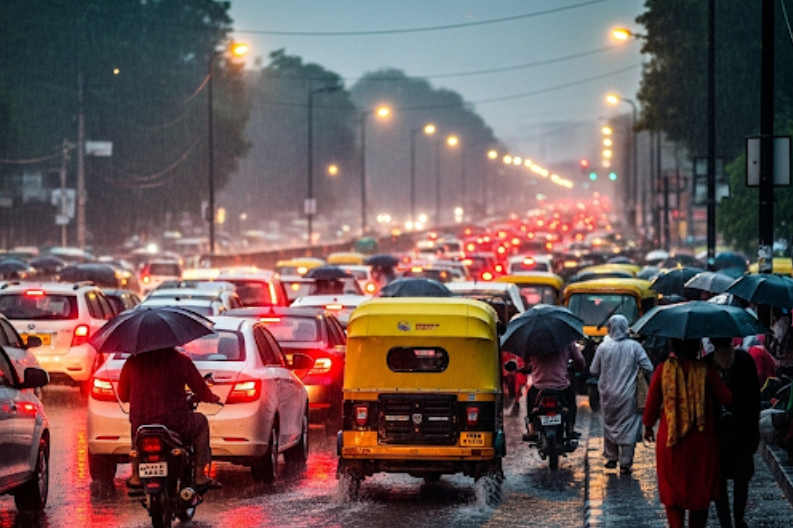Delhi received 36 mm of rainfall over 24 hours ending at 8:30 am. The showers brought much-needed relief from the heat on Sunday afternoon but also caused heavy traffic across the city.
Several areas saw significant rain, including Preet Vihar, Rajeev Chowk, and ITO. India Gate, Akshardham, Safdarjung, Lodi Road, Nehru Stadium, Defence Colony, Lajpat Nagar, Kalkaji, Ayanagar, and Deramandi also reported showers. The downpour led to waterlogging in ITO, Lajpat Nagar, and Connaught Place, slowing vehicles to a crawl.
The India Meteorological Department (IMD) said the minimum temperature fell to 23.4 degrees Celsius, three degrees below the seasonal average. The maximum temperature is likely to reach 31 degrees Celsius. At 8:30 am, humidity touched 97 percent due to the rain. The IMD has issued a yellow alert, warning of light to moderate rain and possible thunderstorms in the coming hours.
The rain also improved Delhi’s air quality. Data from the Central Pollution Control Board (CPCB) showed the city’s Air Quality Index (AQI) at 63 at 4 pm, which falls in the ‘satisfactory’ range. AQI between 0 and 50 is ‘good’, 51 to 100 ‘satisfactory’, 101 to 200 ‘moderate’, 201 to 300 ‘poor’, 301 to 400 ‘very poor’, and 401 to 500 ‘severe’.
Chandigarh, about 256 kilometers from Delhi, continues to perform better in air quality and ranks among the cleanest cities in India. Nearby Mohali competes in similar standards of cleanliness. Punjab, on the other hand, often struggles with poor air quality during the paddy stubble-burning season, which pushes AQI levels higher than those in Delhi.
Monsoon rains remain vital for Punjab. July usually brings 150 mm to 250 mm of rain, which supports farming and helps crops grow. Farmers in the state depend heavily on this seasonal rainfall.
In summary, Delhi’s showers cooled the city and improved air quality but created traffic chaos in many areas. With more rain expected, the city will need to manage relief from the heat while tackling problems of waterlogging and congestion.



